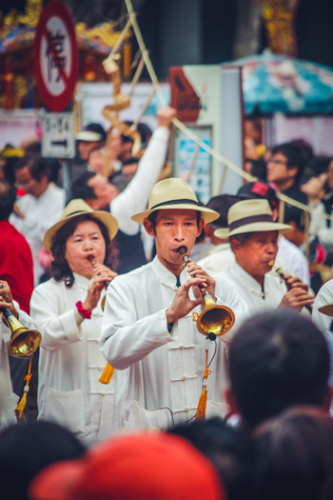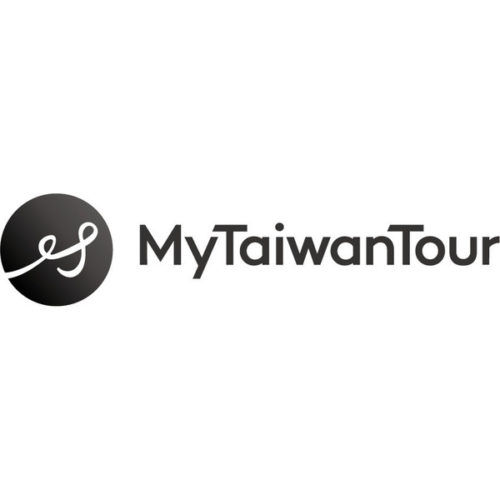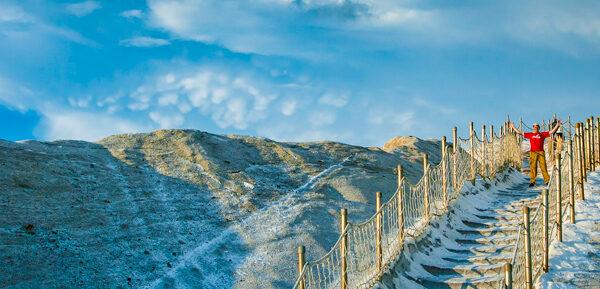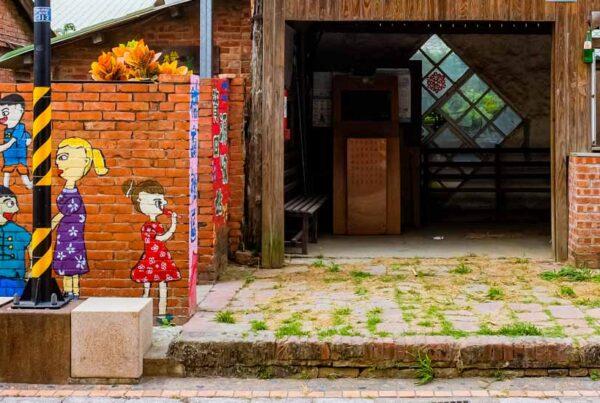Colorful Taiwan Temple Celebrations
Text / RICK CHARETTE
Photos / CHEN CHENG-KUO, VISION
For many visitors to Taiwan, among the most colorful and powerful visual memories taken back home are of the deity-led street parades and acrobatic displays by martial-arts troupes that are part of traditional temple celebrations. We provide you with a little “behind the scenes” tour here, on temple processions, the Eight Generals troupes commonly seen leading them, and the popular annual Kaohsiung Neimen Song Jiang Battle Ritual competition.
There is no better way to witness a nation’s people at their joyful best than by observing them watching, and taking part in, their festivals. In Taiwan, traditional Chinese religious festivals are still celebrated almost exactly as they have been over the hundreds of years since Han Chinese started emigrating from mainland China en masse in the 1600s, though of course with much more pomp and pageantry as the island’s people have grown ever wealthier.

As with other cultures, most of these festivals originated far back in the agricultural past when life was dictated by the cycles of farming life, from planting through harvest. Other popular religious festivals are celebrations of the birthdays of deities, which the Chinese pantheon supplies in breathtaking number. Almost invariably, temples serve as the base for these events. Taiwan is home to approximately 12,000 Chinese-religion places of worship, from small shrines to enormous complexes.
Temple Processions

The main deity in any given temple oversees the goings-on in that locality, and protect the mortal residents. During festival and god-birthday celebrations the main deity will go on one or more inspection processions around the community, carried in a palanquin, which is beautified with elaborate carvings. These are raucous affairs, with much banging of drums, blasting of horns, and bursting of firecrackers to scare off lurking evildoers from the world beyond.
Heading the procession is the zhentou, literally the “head of the procession formation.” These characters act as a security vanguard, protecting the palanquin-seated god further back by frightening off demons and ghosts and at the same time proclaiming the god’s imminent arrival. While this folk-art form has its roots in the timeless religious practices of China, the present form of zhentou in Taiwan has taken shape over the last few decades and is unique to the island.
Among the most visually vibrant zhentou martial-arts troupes are what are called Eight Generals troupes. These are commonly affiliated with a specific temple. Because the art form involves strenuous physical demands – for example, troupes may be on the streets for hours at a time during deity processions – participants are almost universally male and young, and the temple troupes serve as something akin to a boys’ club. The temples encourage healthy recreation, and encourage local lads who experience troubles in life to join, providing them with friendship, support, focus, and the chance to earn a little money. Usually an old-time troupe member will be a volunteer part-time teacher. After winning competitions the result is more and higher commissions to perform in non-competition events.

The Eight Generals
The first region in Taiwan settled by Han Chinese was the southwest, which today is renowned for its passionate temple culture, and more specifically for its zhentou temple-parade troupes. A key troupe within the larger group of security officers that leads a deity-palanquin procession is the Eight Generals. An Eight Generals formation can in fact feature as many as 13 different figures, but in Taiwan the “Eight Generals” appellation is universally applied.

Generals groups originated in Taiwan at the city of Tainan’s Bailong (White Dragon) Temple in the 1800s. When the tradition spread to the city of Chiayi (which today remains a hotbed of temple-troupe culture), the influential Ciji Temple troupe settled on an array of four main generals and four “gods of the seasons.” To make performances more visually compelling, over time Taiwan troupes have made the collective movements and individual dance/acrobatic movements more active, leading to the sophisticated, complex performances known today.

Ancient belief is that the generals were troublemaking demons that were brought to heel and, over time, entered into the City God’s retinue as guards. The duty of these secondary deities is to act as a bodyguard for the main god or gods in processions, driving away ghosts and demons or capturing them to haul back for trial. At the same time, the mortal community is protected. The generals are equipped with different types of ancient tools of torture, used for “interrogation.”
The ritualized formations used during performances are drawn from Daoist religious elements steeped in symbolic meaning, such as the Eight Trigrams, Five Elements, and Seven Stars. Each Eight Generals deity has distinguishing face-paint design, weaponry, and other elements, and individual troupes will introduce their own variations.
Let’s use Xia Da Shen, or the Great Summer God, as an example. The intricate design on his face is said to resemble a turtle, with a plum blossom design also incorporated, the flower representing the summer season. Flame patterns are also commonly incorporated, for his responsibility is the torture of prisoners through burning. He’ll be carrying his tool of torture, a brazier. Hot coals, anyone?
In the past the makeup consisted simply of a single base color, black eyes, and a red mouth, but designs have been become steadily more complex over time. This is said to be a reflection of the struggle in society at large – respect for traditions while also adapting to modernity’s demand for change and novelty. Taiwan, a society of pioneers in the same fashion as American society sees itself in the best sense, is one of Asia’s societies most open to change.
In performing their task of menacing otherworldly ne’er-do-wells, the elaborate-garb Eight Generals strike fearsome poses and facial expressions. According to tradition, under no circumstances should the performers speak, for this might reveal them to their foes as mere mortals in disguise. Nor should they smile, for the act of smiling might crack their makeup. The Eight Generals walk with high, exaggerated sweeping steps, and approach a temple’s central portal in pairs while the rest of the troupe marks out an intrusion-safe zone. It must be the central portal, for a temple’s main deity sits in direct alignment inside in the first hall, and the presentation is for the deity first, human onlookers second.
Kaohsiung Neimen Song Jiang Battle Ritual
The Song Jiang Battle Array is a traditional type of performance art incorporating kung fu, drumming, rapid formation transitions, and mock fighting with ancient-style weaponry. The Kaohsiung Neimen Song Jiang Battle Ritual is an annual event that has an adrenaline-pumping grand competition of zhentou martial-arts troupes as its centerpiece. This is the highlight of cultural life in the city of Kaohsiung’s rural Neimen District, where a population of just 15,000 supports between 50 and 60 martial-arts performance troupes.

The 2019 edition ran from Saturday, March 16 to Sunday, April 7. The zhentou competition ran from Saturday, March 30, when the opening ceremony, opening round of the competition, and pulsatingly kaleidoscopic Water Dancing & Fireworks show were held, to the next Saturday, April 6, when the competition finals, awards ceremony, and closing Water Dancing & Fireworks show were held.

The formal name of the zhentou competition is the Creative Song Jiang Battle Array Contest. Competing teams are from schools around Taiwan, from elementary to university level. This year, for example, the youngest team was the Jingliao Elementary School Alliance Team, featuring elite performers from different elementary schools. Other troupes came from two high schools and five universities. Also interspersed throughout the full length of the festivities are performances by specially invited troupes, with perhaps the most notable such ensemble this year being the Xiamen Xiangan SongJiang Battle Array troupe from mainland China.

“Song Jiang” was the main character in the classical Chinese novel The Water Margin, who formed his men into intricate formations emphasizing quick transformation to different fighting techniques and positioning. Today’s battle-array performers wield old-style weapons, rattan shields, etc., and some dress as characters from the novel (108 in total). The Eight Generals are also a Song Jiang zhentou constant. Today, the typical troupe is composed of 36 members. The Taiwan battle-array tradition started in the 19th century with martial-arts teams, centered around temples, that served as militia. Then-isolated Neimen, for example, was under constant threat of attack from bandits and indigenous warriors.

The goal of the Kaohsiung City Government, which is the organizer, is to spark renewed interest in this old form of artistic expression. Recognizing that in today’s sophisticated world young people have many other recreation options vying for their attention, it encourages the freestyle introduction of creativity atop a faithful base of traditional martial-arts formation skills. You’ll thus see imaginative flourishes ranging from human-pyramid-building, spinning plates on sticks, and juggling to street dance and hip-hop, rap, and rock music.

Among the splendiferous array of other festival attractions this year was the Daily Gourmet Market, Neimen history and culture tours, the three-day Religious Carnival, and the Neimen Chefs and Tables event. The last was focused on bando, Taiwan’s unique outdoor banqueting culture; for generations, Neimen has been a key Taiwan font for bando crews.
For more information on the Neimen festival, visit who-ha.com.tw. For more on Taiwan religion in general, visit the Tourism Bureau website at taiwan.net.tw.


For this article, we visited the Song Jiang Battle Ritual event in Neimen, Kaohsiung. The trip was organized by MYTAIWANTOUR (www.mytaiwantour.com) and sponsored by the Kaohsiung City Government.
Further reading on other sites:
TAIWAN SCENE: An ancient Chinese tradition made modern: Taiwan’s 2019 Kaohsiung Neimen Song Jiang Battle Array
About the author

Rick Charette
A Canadian, Rick has been resident in Taiwan almost continually since 1988. His book, article, and other writings, on Asian and North American destinations and subjects—encompassing travel, culture, history, business/economics—have been published widely overseas and in Taiwan. He has worked with National Geographic, Michelin, APA Insight Guides, and other Western groups internationally, and with many local publishers and central/city/county government bodies in Taiwan. Rick also handles a wide range of editorial and translation (from Mandarin Chinese) projects.















